
Community Takeover: In Conversation with Marg Greenwood
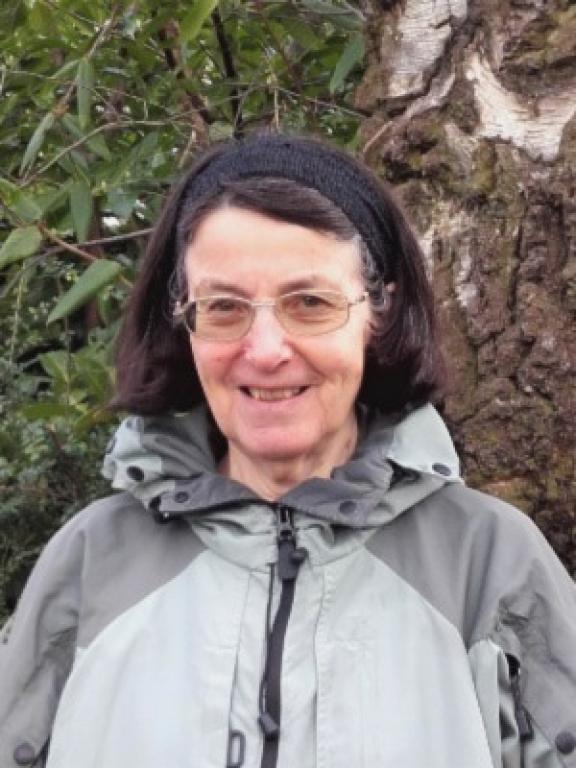 Image provided by Marg Greenwood
Image provided by Marg Greenwood
Pictured: Marg Greenwood
Since we opened our call for stories back in late 2020, we have had the privilege to learn what the Highlands and Islands mean to each one of our submitters. For our community takeover today, we were delighted to speak to story submitter, solo traveller and author Marg Greenwood who has over the past twenty years been a frequent visitor to the Highlands and Islands.
SOTHI: First of all welcome Marg and thank you for kindly letting me interview you today. It’s wonderful to meet you at last! I suppose where I would start is right back at the very beginning. Over the past 20 years you have been a frequent visitor to the Highlands and Islands, particularly the West Coast. Thinking back to where it all began, what do you remember about your first trip to the Highlands and Islands? What was it like?
MG: It's such a long time ago but I actually have two memories that have merged into one. What I can remember is my first visit to Muck, which was almost exactly 20 years ago. The ferry from Mallaig to the Small Isles, (which was quite a small ferry and not a roll-on roll-off one) couldn’t dock at the small pier on Muck because it was too big, so it dropped anchor a few hundred yards away from the old pier. The passengers who were destined for Muck included some children and myself and one or two other adults. And we jumped down into a small boat which had come from the harbour, which they called the ‘flit’ boat because, I think, it ‘flitted’ from the main ferry to the island, and I remember it was pouring with rain. Three or four children were giggling, sheltering under the prow of the boat, and I joined them, and I thought, well, this is fun!
That was the first part of the arrival and the second part was being met at the pier by the bunkhouse warden. A lady called Rosie, roughly my age, who met me with a wheelbarrow for my luggage and she and I are still great mates after 20 odd years. She is no longer the bunkhouse warden, but it was her welcome, plus the children having fun, plus the fact that it stopped raining and I was able to go out and realise that the whole of the island seemed to be very safe, and I felt that I was home.
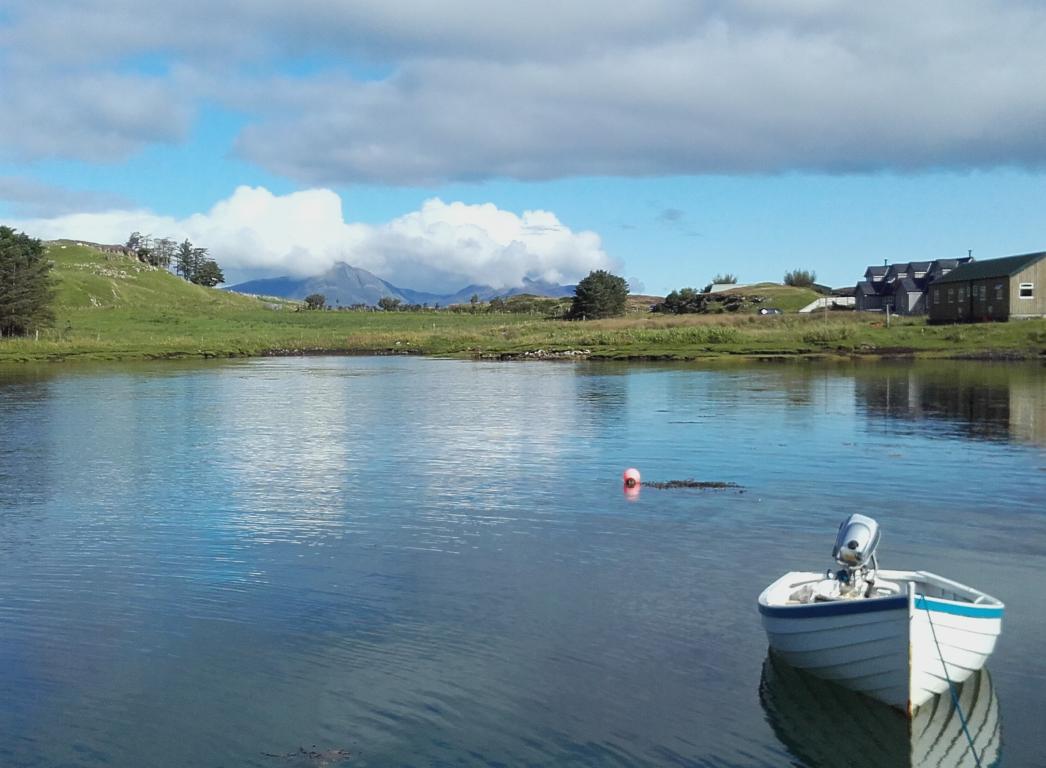 Image provided by Marg Greenwood
Image provided by Marg Greenwood
The estuary at Port Mòr, Isle of Muck.
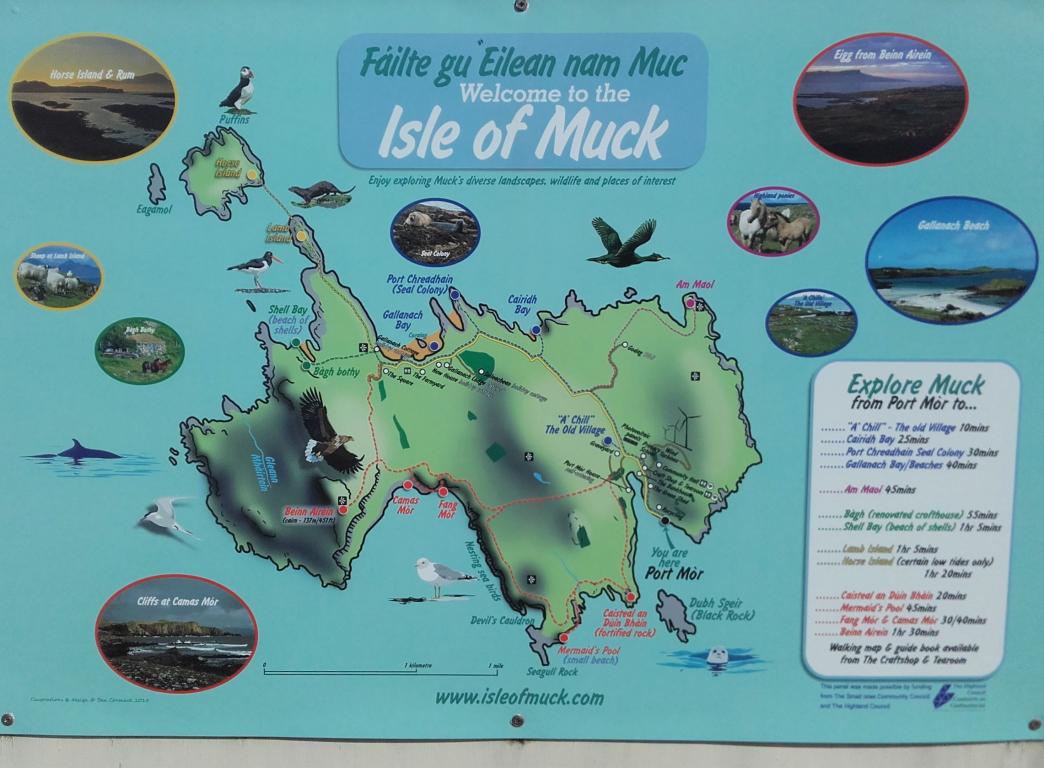 Image provided by Marg Greenwood
Image provided by Marg Greenwood
A warm welcome to Isle of Muck.
 Port Mòr on the Isle of Muck, Lochaber
Port Mòr on the Isle of Muck, LochaberImage provided by Marg Greenwood
A view onto the Isle of Muck as seen from Port Mòr.
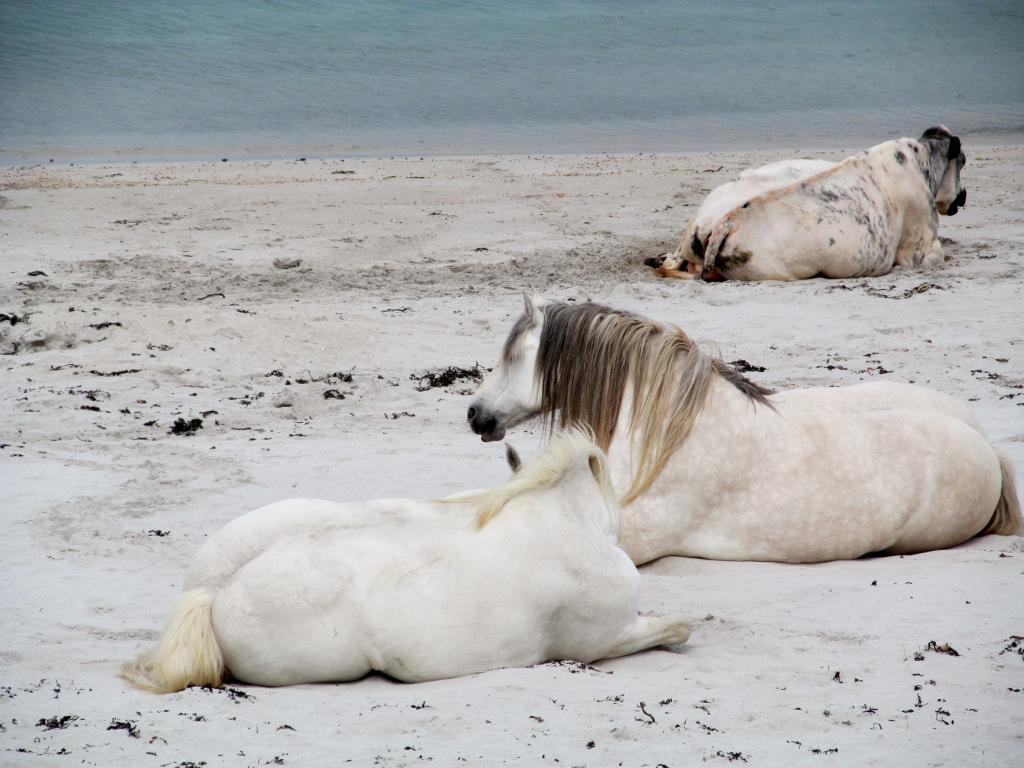 Image provided by Marg Greenwood
Image provided by Marg Greenwood
Two horses and a cow relaxing on the white sands of Gallanach Beach, Isle of Muck.
SOTHI: What still draws you to the Highlands and Islands now, 20 years on from that first trip?
MG: Well, I would say that it's a combination of the scenery, especially the coastal scenery, the hills, and the wildness of the landscapes. It’s also confidence in my own curiosity (still pretty strong), to discover something that is completely unexpected. I call these my “serendipitous finds”.
I’ll give you an example; only a few weeks ago I was on the island of Gigha. I went looking for a particular fish trap, because I'm quite interested in finding old fish traps. It was marked on the Gigha map I had, but I couldn’t find it! A fish trap looks like a dyke in the water, joining two bits of land together. And there's a gap in the dyke where the fish would swim in at high tide. However, a few days later, I found a different one quite by chance, it was in another place on Gigha, and it wasn’t on the map! Lo and behold, I saw this dyke with a gap in the middle and recognised that it had been a trap. When I found it I was absolutely thrilled to bits! This is only one example what happens when I’m wandering around.
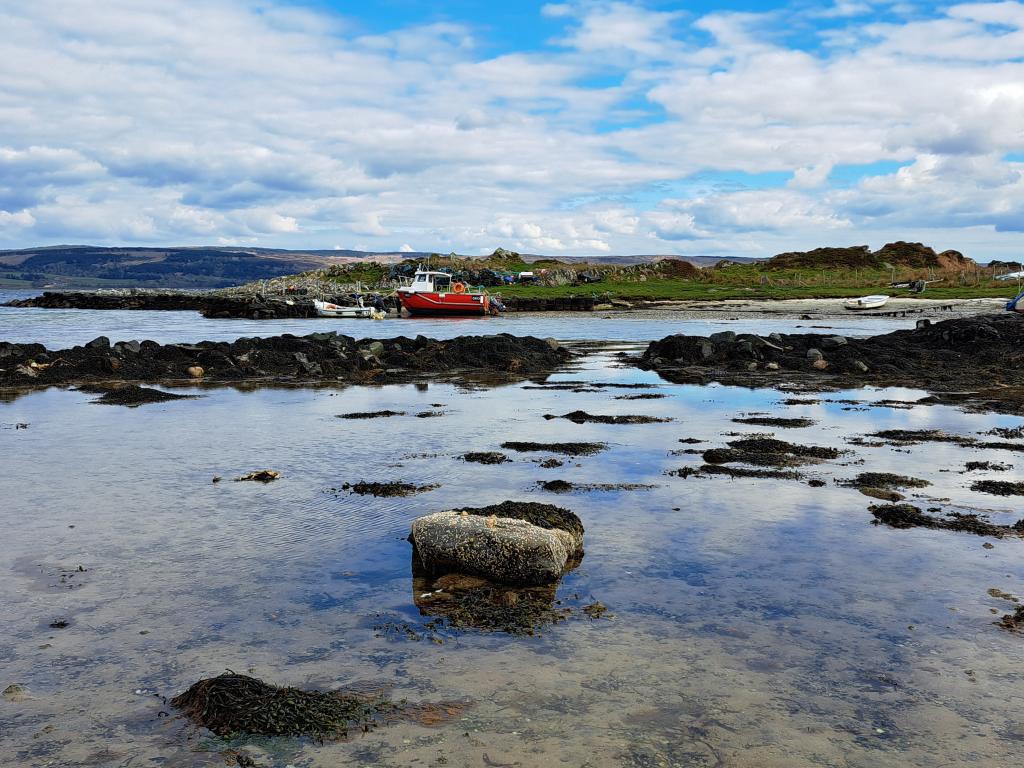 Image provided by Marg Greenwood
Image provided by Marg Greenwood
View of the aforesaid fish trap, an unexpected but serendipitous find on the Isle of Gigha.
SOTHI: It’s just as you say in your book – it’s akin to a surprise around every corner. It's a renewed adventure, so to speak, isn't it?
MG: That’s right! My great nephew, Hector, had asked me, “Why do you go to the Scottish islands every year?” It was something I hadn’t thought about before and it was completely off the cuff when I answered him “because there’s a surprise around every corner”.
SOTHI: Your love for the Highlands and Islands and stories and storytelling in general is so apparent in all the stories that you've shared with us. Which of the stories of all that you've submitted would you say is your favourite?
MG: Really, really hard to say which is my favourite!
The one story that brings quite a lot of experiences together and the one that I still smile about when I hear the story, is the tale of the Brownie of Gigha and Cara. On Gigha, I was able to teach a song to the schoolchildren that I had based on the folktale of the Brownie of Cara which is an uninhabited island just off the coast of Gigha. The Brownie is a character who I rather take to. If you can imagine he’s like a gnome or goblin, a little man with a long beard. You can picture him as you like, but the nice thing about him is that he’s got a very intricate personality. He plays tricks on you. He demands respect so must to bow to him and take off your hat when you meet him. But he’s also very, very helpful in the house and he lives in people’s attics.
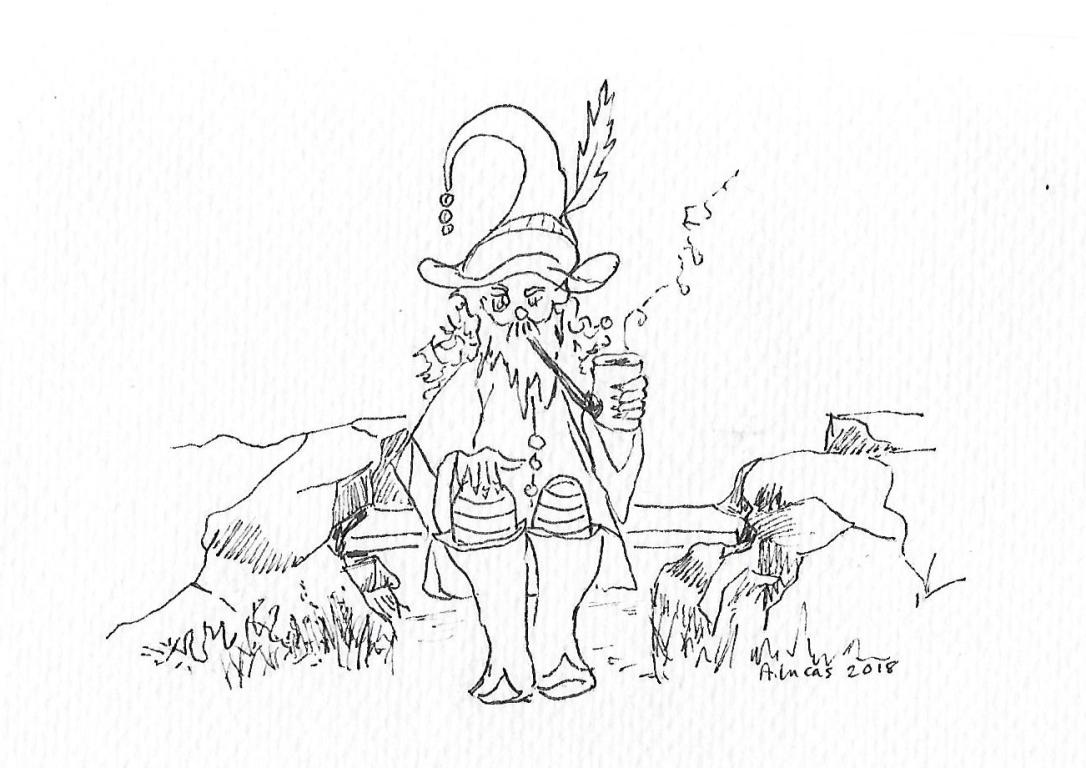 Drawing of the Brownie, sitting on a plank.
Drawing of the Brownie, sitting on a plank.Image provided by Marg Greenwood
A sketch of the Brownie, sitting atop a wooden plank.
The story itself is interesting because until very recently there were some people who still believe that the Brownie exists, especially on Cara. I've never been to Cara, but I’d love to.
I taught the children from the Gigha school how to sing the song – there was one child who when the chorus says, “just take off your hat”, she actually got her head almost all the way down to the floor. She really put her heart and soul into taking off her hat for the Brownie! The children had great fun inventing tricks they thought the Brownie would play on them.
The Brownie is said to be a ghost of a MacDonald who was murdered by a Campbell. Hamish Haswell-Smith has written at least two books about the islands. He said that he was on Gigha and wanted to go to Cara and was talking to a fisherman and asked him whether he could take him and his wife his boat. The fisherman had said yes, but when he discovered that Haswell-Smith's wife was a Campbell, he said “No, I’m not going to take you. I can’t take you to Cara. Because of the Brownie, he will get us!” And that story I think, dates from the last 30 years.
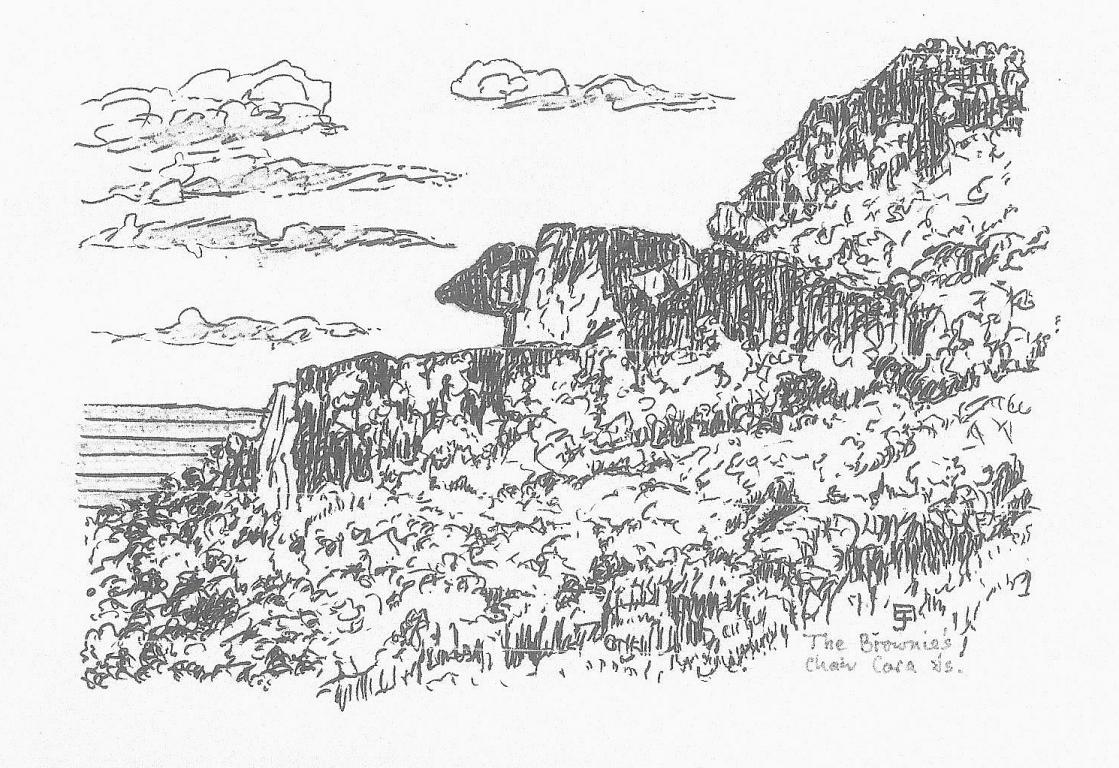 Image provided by Marg Greenwood
Image provided by Marg Greenwood
A sketch of the Brownie's Chair, Isle of Cara.
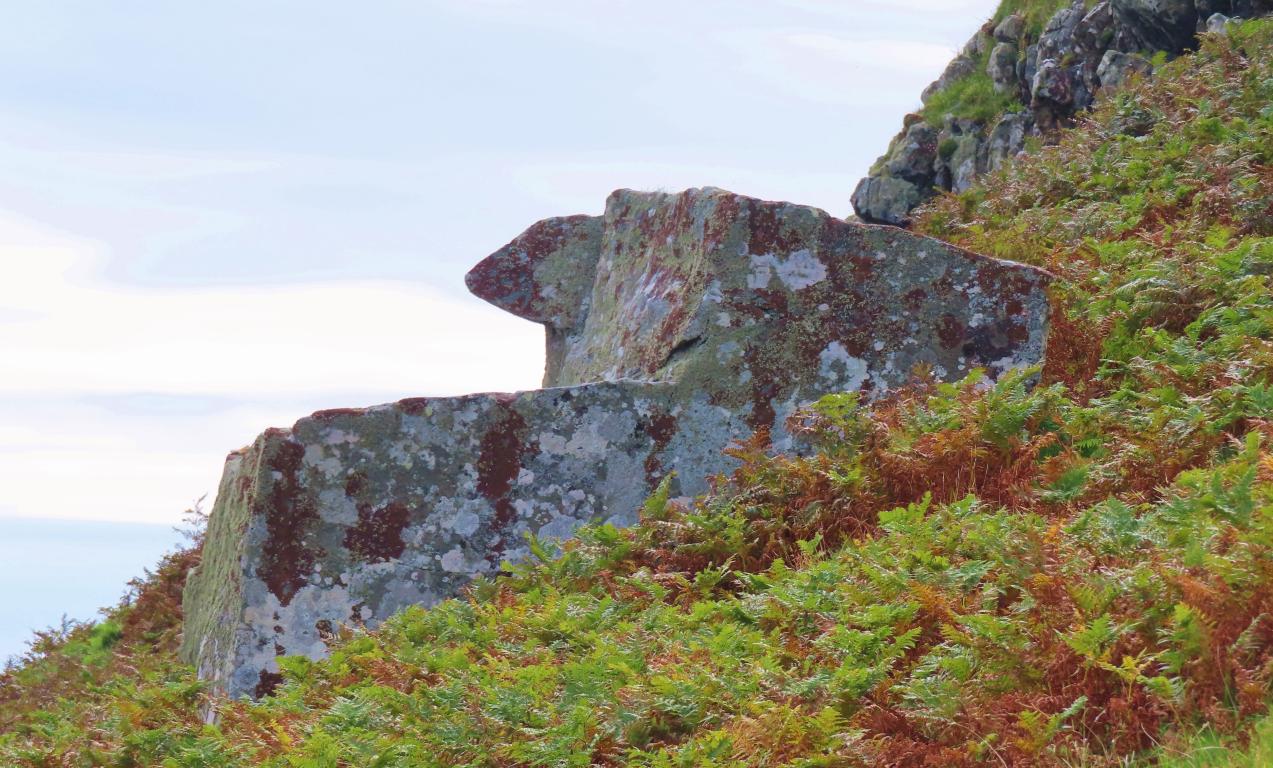 Image provided by Marg Greenwood
Image provided by Marg Greenwood
The Brownie's Chair, photographed on the Isle of Cara.
SOTHI: So the legend is still going strong!
SOTHI: On the subject of stories and storytelling, you have recently written and published your new book Return to Muck, which focuses on your adventures in the Inner and Outer Hebrides through prose, poetry and song which beautifully bring your experiences to life. What inspired your creative thinking process in composing the material for the book? Were there any unusual sources of inspiration?
MG: Well, I think my musical background and interest in language are sources of inspiration which can lead to writing a poem or song, rather than a piece of prose. For example, I’m very fond of the grassland called machair. A poem felt more natural to express the concept of machair and its flowers, than, for example, a botanical description in prose.
Also, I think hearing seals sing for the first time was another source of inspiration. Some people say that seals bark, but I don’t think they bark, I think they sing. Listening to them I was reminded of choir boys.
Thinking again about serendipity, I was on Lismore once, and was really lucky to be able to join a Gaelic cultural weekend. One of the events I joined in with was a singing session with Mary Ann Kennedy, a Gaelic singer. She told me about puirt à beul, mouth music, used originally as an alternative to instruments when people were dancing. I was fascinated by this.
I am also very interested in the Gaelic language, and have been really fascinated by its grammar. Sadly I cannot speak Gaelic.
SOTHI: So it’s essentially taking in inspiration from all around you – chance encounters, the environment, the people, the land, culture all coming together.
SOTHI: Keeping with places and the environment, if you had to pick one what is your favourite place that you visited on your travels in the Highlands and Islands ? Do you also have any favourite experience in that place?
MG: There’s a tiny beach on Muck, a cove really, called Shell Beach, on the north side of Muck. Not many people get to it because you have to know where it is! It has a view of Horse Island and the beach has small rocky inlets. You can sit on the shells and put your back against the rocks, which is nice. I’ve never seen anybody else there except my partner who came with me the last time about a few weeks ago. It’s not dramatic. Just very pretty and very safe.
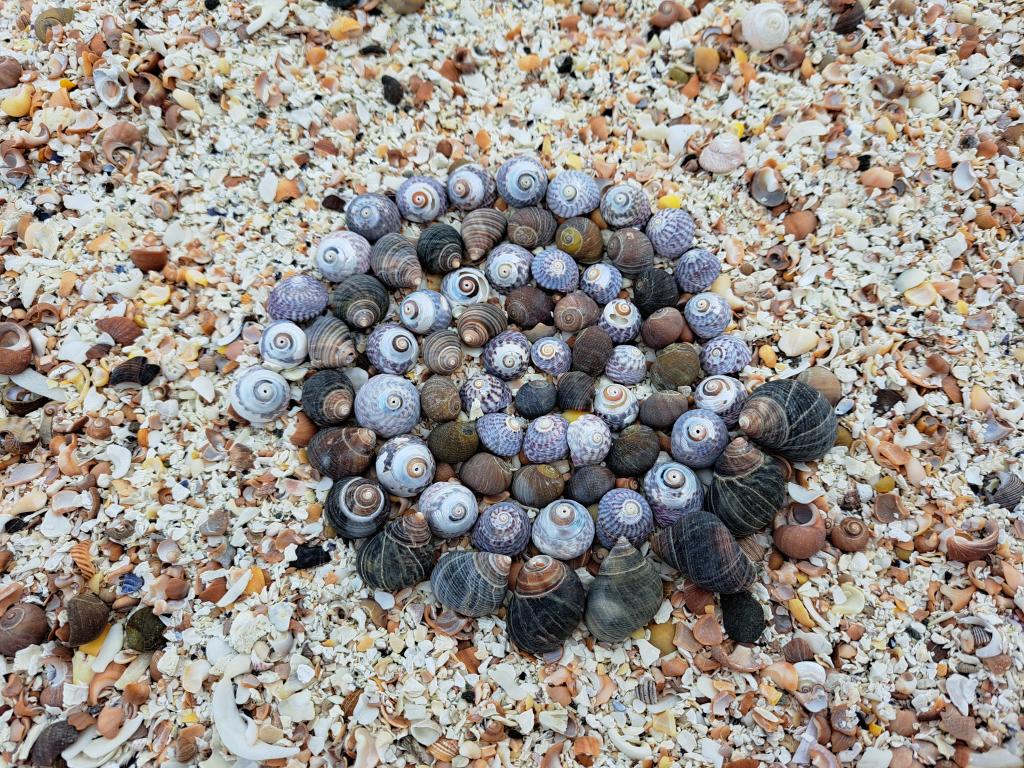 Image provided by Marg Greenwood
Image provided by Marg Greenwood
A beautiful arrangement of shells on the aptly-named Shell Beach, Isle of Muck.
I have so many favourite experiences in the Highlands and Islands. They have to be the ones that were chance encounters. And I think I would like to go back to Lismore and the Gaelic weekend.
I met not only Mary Ann Kennedy, who was doing these workshops on singing but there was also Roddy MacLean, who took a group on a walk near Castle Coeffin which is a amazing medieval-looking castle covered with ivy. It looks as if it’s out of a fairy tale.
Underneath the castle is a bay, with a fish trap which was lovely to see. We walked along the dyke with Roddy and he knew about the seaweed, and all of the flowers’ names and history including the silverweed which even grows in my local woods. Roddy had some wonderful stories to tell; linking the flowers, their uses, place names, and folk tales together.
 Image provided by Marg Greenwood
Image provided by Marg Greenwood
A view of Castle Coeffin from its neighbouring bay, Isle of Lismore.
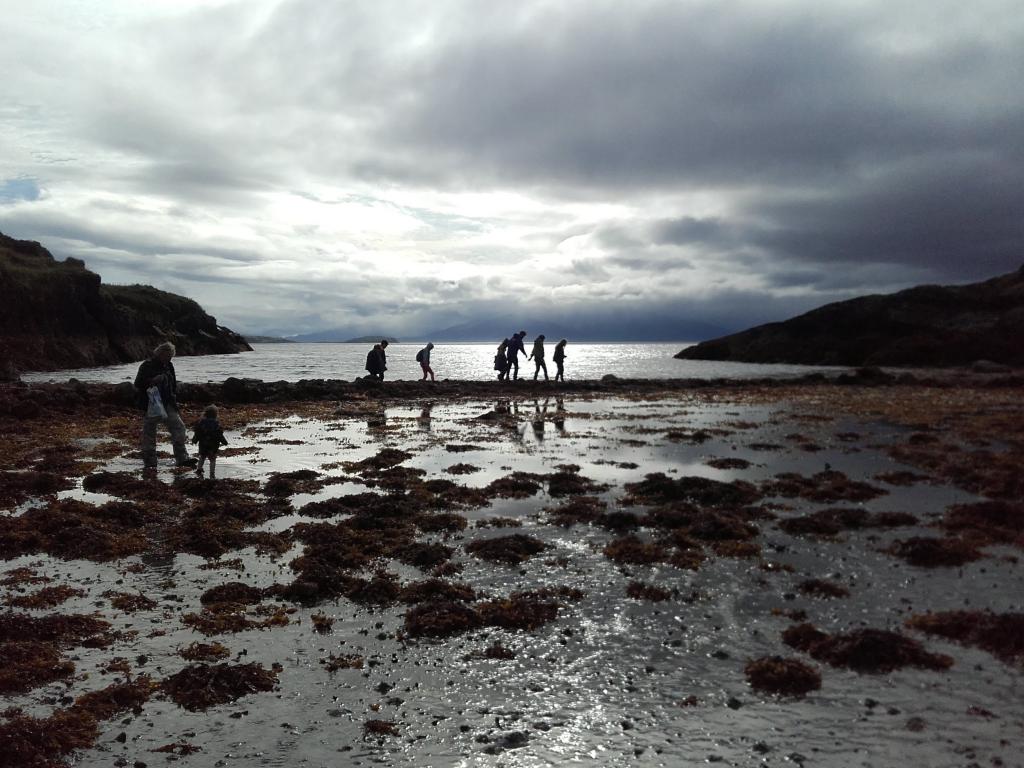 Image provided by Marg Greenwood
Image provided by Marg Greenwood
Walking along the remains of a fish trap, Isle of Lismore.
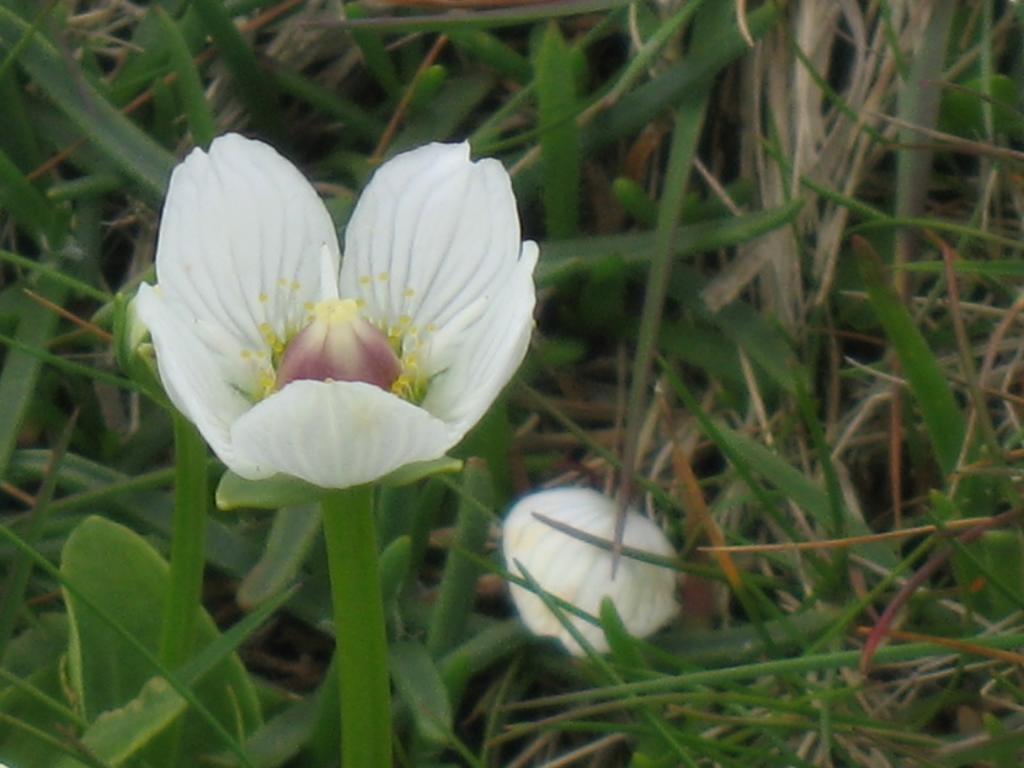 Image provided by Marg Greenwood
Image provided by Marg Greenwood
Grass of Parnassus, Fionnan Geal, on the Isle of Lismore.
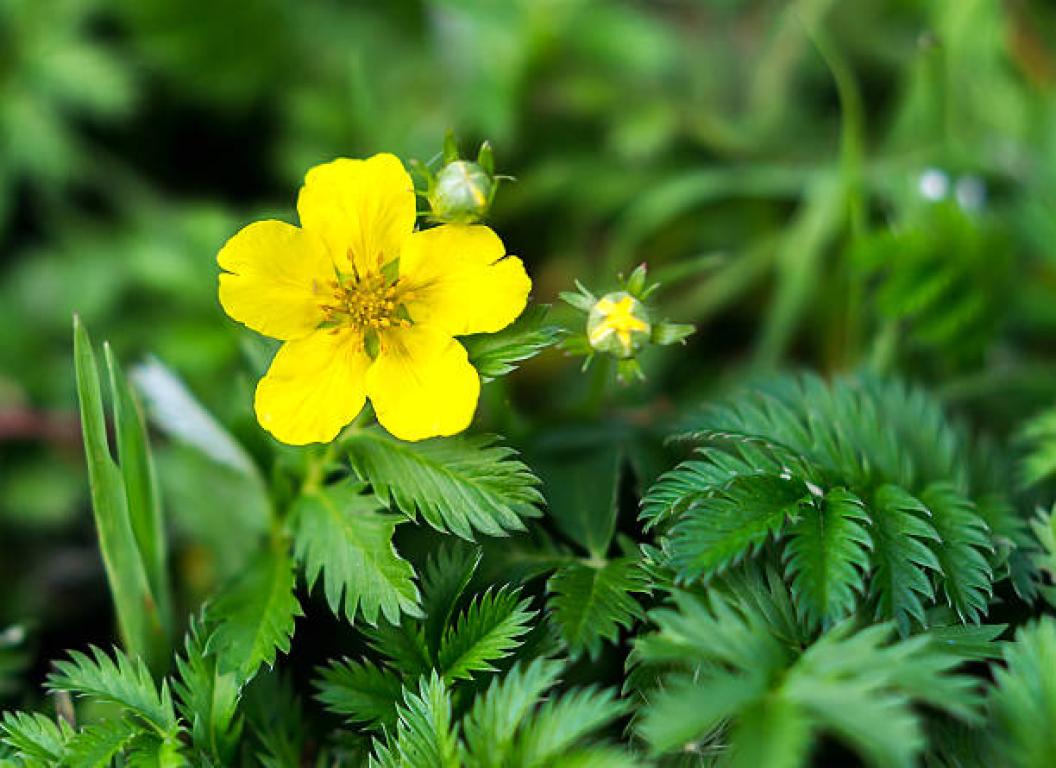 Silverweed, Brisgean, on the Isle of Lismore
Silverweed, Brisgean, on the Isle of LismoreImage provided by Marg Greenwood
Silverweed, Brisgean, on the Isle of Lismore.
SOTHI: In a similar vein to that last question was there anyone that you've met during your travels in the Highlands and Islands who had a particularly strong influence on you?
MG: There’s a few people I’ve grown quite fond of, but they probably don’t know that!
Actually, two of the people I would have liked to spend a lot more time with are Roddy, or Ruairidh, MacLean whom I’ve just mentioned, and his wife Kerrie, the couple I met on Lismore. Both of whom are Gaelic scholars. Roddy had such a huge pool of knowledge. He knew about the flowers and their uses. He knew about the folk tales and the history. I would very much like to meet him again.
SOTHI: Just to close us out and thinking about your story and the time you have spent here as a whole, what do you feel the Spirit of the Highlands and Islands means to you? Where do you feel the most connected to the region?
It’s hard to say what the Spirit of the Highlands and Islands is. Where I feel most connected to is Muck and that's more of a personal thing because of the people I know there, who I want to see again, as well as wanting to return to the island and see what more it has to offer.
But coming back to the concept of ‘Spirit,’ I associate that with the Monach Isles. I was so lucky to be able to be taken to these uninhabited islands by launch. There were 14 of us on that trip and we walked across three islands, at low tide. I've written about this experience in Return to Muck. Beautiful seascapes and landscapes. The ruins of the houses on the Monachs brought the landscape to life in a strange sort of way. While I was walking, I heard seals singing – I never saw them, but I heard them all the way along.
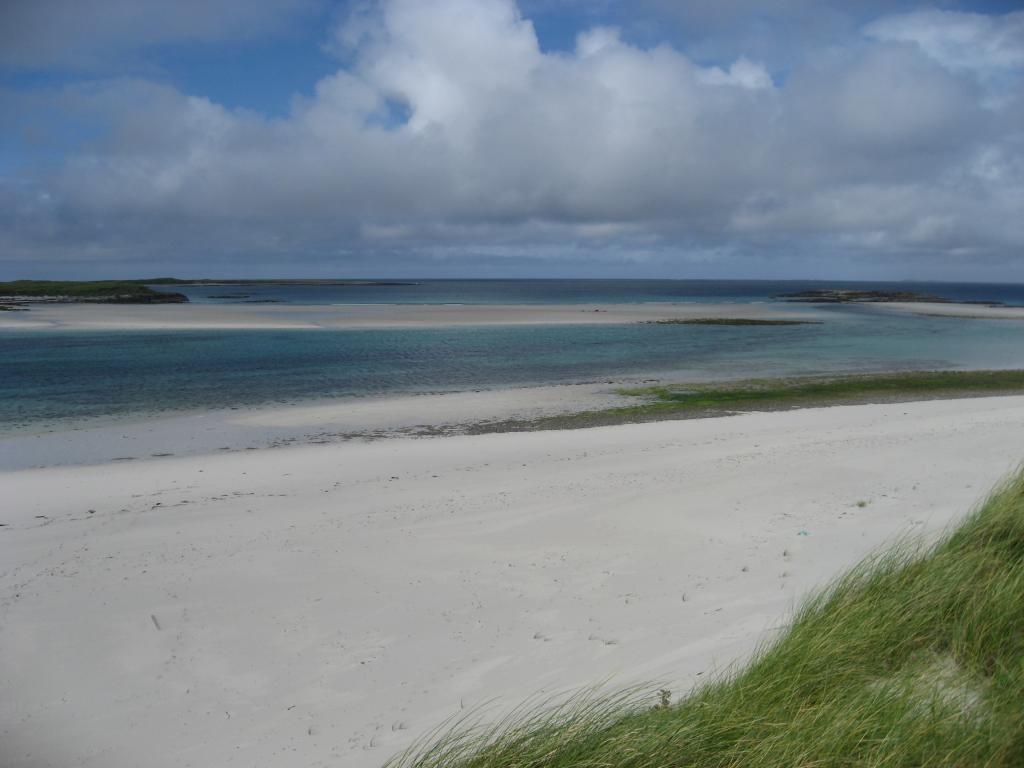 Image provided by Marg Greenwood
Image provided by Marg Greenwood
Walking across the beautiful Monach Isles, off North Uist.
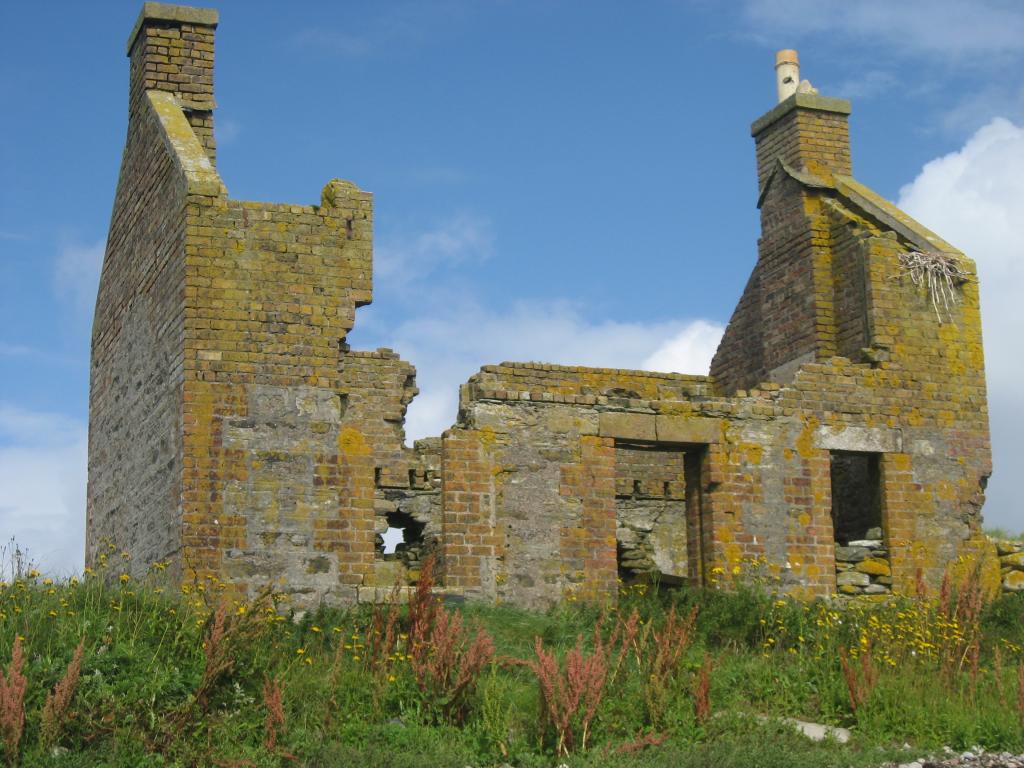 Image provided by Marg Greenwood
Image provided by Marg Greenwood
A ruined building from a deserted village on Ceann Ear.
On the last island, Ceann Ear, at the old schoolhouse, I was the last one to make it back to the group. There in the main room, two men were telling tales sitting on either side of an unlit fireplace. They were telling stories about some of their ancestors who had lived on the Monach Islands and some events that had happened there that their ancestors had told them about. I was awestruck because it was impromptu. No one had organised it. To me, it was very much the Spirit of the Highlands and Islands. It was folk tales, it was memories, and a gathering – a ceilidh - which was so lovely. I shall never forget that experience.
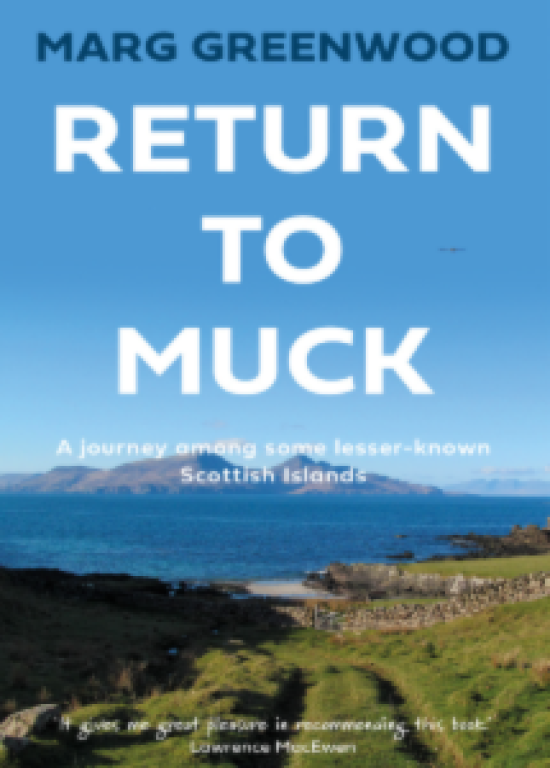
Thank you very much to Marg Greenwood for guesting on this week’s Spirit: Spotlight.
Interested about Marg's solo travels and want to read more? Explore more of Marg’s fascinating adventures to the Outer Hebrides and the Small Isles in her new book Return to Muck, available now.
For more behind the scenes tales from Marg's travels, please visit her online blog 'Marg's Solo Travels in the Scottish Islands' discoverable here.